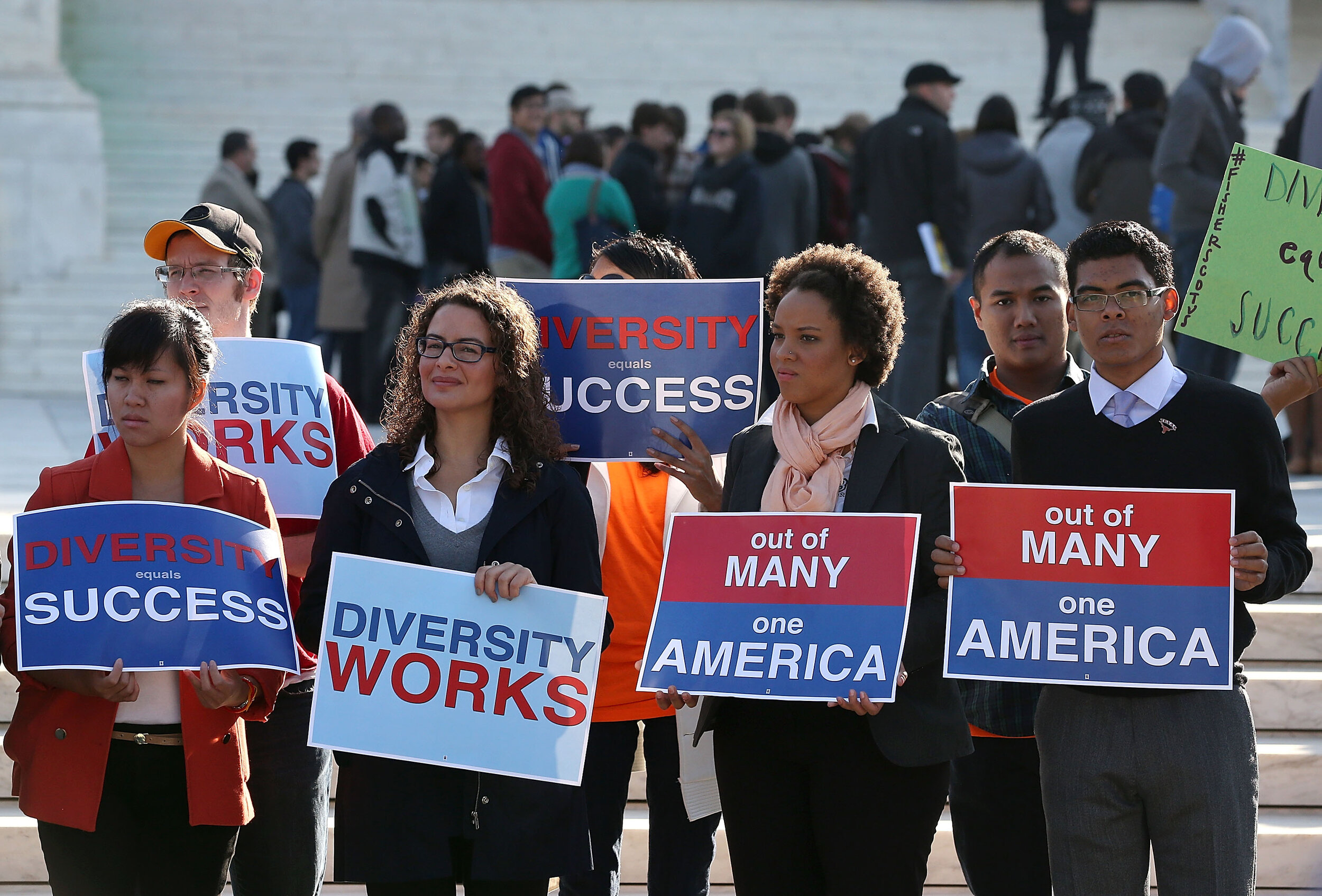A Brief History of Affirmative Action

Affirmative action arose at the height of the civil rights movement when President John F. Kennedy’s 1961 Executive Order 10925 and President Lyndon B. Johnson’s 1965 Executive Order 11246 mandated that federal government contractors "take affirmative action to ensure that applicants are employed and that employees are treated during employment without regard to their race, creed, color, or national origin." As President Johnson explained:
Protesters march around the Detroit federal building during Supreme Court deliberations on the Allan Bakke case.
In far too many ways American Negroes have been another nation: deprived of freedom, crippled by hatred, the doors of opportunity closed to hope . . . You do not wipe away the scars of centuries by saying: Now you are free to go where you want, and do as you desire, and choose the leaders you please. You do not take a person who, for years, has been hobbled by chains and liberate him, bring him up to the starting line of a race and then say, "you are free to compete with all the others," and still justly believe that you have been completely fair.
The federal government intended for affirmative action to do more than simply bar racial discrimination. Rather, it created affirmative action to level the playing field by neutralizing the effect of years of systemic racial discrimination and oppression in the United States.
However, less than 20 years later, in 1978, Justice Powell announced in Regents of the University of California v. Bakke that remedying societal racial discrimination did not justify the consideration of race in university admissions. Justice Powell instead concluded that a compelling government interest in the pursuit of the educational benefits of a diverse student body justified the narrowly-tailored use of race in university admissions. The United States Supreme Court adopted Justice Powell’s diversity rationale in Grutter v. Bollinger, then reaffirmed the legal permissibility of the consideration of race in admissions multiple times in Gratz v. Bollinger in 2003 and in Fisher v. University of Texas in both 2013 and 2016. Overall, the Supreme Court has held five times over more than 41 years that it is legally permissible for colleges and universities to consider race, as one of many factors, in admissions in order to assemble a diverse student body, so students can reap the benefits of learning in a diverse environment.
Elaine Jones, fourth LDF President and Director-Counsel, at an affirmative action rally in front of the Supreme Court of the United States via LDF Archives
John Payton, sixth LDF President and Director-Counsel, after arguments in Gratz v. Bollinger via LDF Archives
LDF has played a significant role in this history – and was deeply involved with all five Supreme Court cases. LDF filed an amicus brief in Bakke arguing that the history of the Fourteenth Amendment “demonstrates that the framers intended it to legitimate and allow the implementation of race-specific remedial measures where a substantial need for such programs was evident.” The brief emphasized that the court should uphold the plaintiff’s medical school affirmative action program because it ameliorated two conditions – a lack of doctors of color caused by de jure segregation, and the lack of health care professionals serving communities of color. – and should therefore be allowed to remain in place. While the court ultimately rejected this remedial rationale for affirmative action , it does reflect affirmative action’s original intent.
Leon Wheeler holds a sign that reads "We Support U.T. Austin" during a rally in front of the U.S. Supreme Court Supreme, on October 10, 2012 in Washington, DC. via Getty Images
In 2003, LDF filed an amicus brief in Grutter in support of the University of Michigan Law School’s holistic admissions process, and, in Gratz, served as lead counsel for the African American and Latino students who intervened to defend the constitutionality of the University of Michigan’s undergraduate admissions program. Former LDF Director-Counsel John Payton also argued on behalf of the university before the United States Supreme Court in Gratz. In the first Fisher case, LDF filed an amicus brief in 2013 in support of the University of Texas – and presented oral arguments before the U.S. Court of Appeals for the Fifth Circuit. As the Fisher case continued in 2015, LDF filed an amicus brief on behalf of the Black Student Alliance (BSA) and the Black Ex-Student Alliance (BEST) that emphasized the importance of maintaining diversity on college campuses. “[W]hen students encounter classmates from different backgrounds — within and across dimensions of race, socio-economic status, and beyond — and come to understand and respect each other as individuals, they are all better for it,” our brief read.



